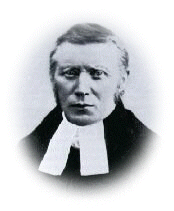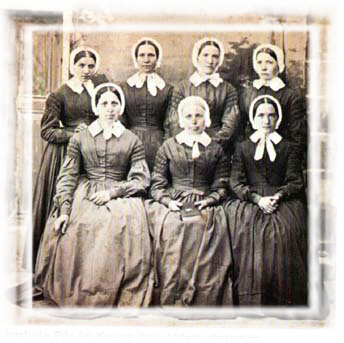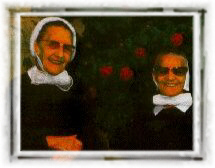![]()
|
In This Page |
|
|
|
|
|
|
|
|
|
|
|
|
Theodor Fliedner
First Founder
 Before Founding the School:
Before Founding the School:
In 1846 Pastor “Gobat” was in London in order
to be ordained a Bishop.
Due to contacts between Fliedner and the king of Prussia at that time, and upon request of the king, Fliedner sent another four female clerics to Jerusalem. It was also decided that a small Hospital be built to supply medical aids and services to the Arabs, in addition to a school for Palestinian and German girls. The king of Prussia-in addition to several other German, Dutch, and British foundations and organizations- supplied financial donations to supply the project.
In April 17th 1851, Pastor Fliedner had a meeting with four clerics in
Jerusalem, and after several weeks of long search, they rented a house near the church of
the “Holy Sepulchre”. In this house Fliedner established the hospital and the
“Girls’ School”. That was the beginning of an establishment for helping the
Palestinian girls, and this great establishment is still standing high until this day,
represented by the current Talitha Kumi.
Later on, the Hospital was separated from the school due to expansions and
diversions of the directions of each of them.
Establishing the
“Educational House” in Old Jerusalem:
"Top
of Page"![]()
1- The beginning: The work started by accepting an orphan Arab girl. At the beginning the work of the nuns
was divided into two places; Two nuns used to teach sewing and German language at Bishop
Gobat’s school, and in the afternoons they used to teach at the education house they
lived in.
In the first year, there were about 12 girls in the house, and in 1853
Sister Charlotte Pilz was sent to Jerusalem in order to help the other clerics and nuns.
She helped a lot to evolve and expand the house, which was by now a center for helping
Arab girls. The house was even known as “Charlotte’s House” or
“Charlotte’s Center”. Since Bishop Gobat was an Anglican (British), and
Pilz was a Lutheran (German), the problems were quite clear between the German language
center and the English language department, therefore the “House” was separated
from Gobat’s school in 1856.
After the separation; the nuns condensed their efforts in their own education house, thereby the number of the girls quantumly increased; it increased so much that the nuns were obliged to refuse the admission of several additional applicants to the school for the lack of space.
In 1860 the nuns and clerics bought a piece of
land outside the old city on a hill called “Gottfried’s Hoehe”; The
“Height of Gottfried”, referring to the leader Gottfried Al Pion, who took this
land in the 11th century to settle his men in it.
In 1861 the number of the girls that were obtaining their education in the
house reached 35; 23 of them lived permanently in the house and the other 12 came to the
house only in the day time.
In the course of time, the reputation of the
school (Education House) became higher and higher. In fact, it became superb, which
caused a lot of families wanting to have their daughters educated by the nuns in the
house. They found that a girl that is raised by these nuns would find a husband
faster than other girls. Due to this, it was essential to add another building for the
school.
In 1866 they started to build a new school on Gottfried’s height. The
German Doctor Schick supervised the work. The new school was first inaugurated under the
name of “Talitha Kumi” on January 1st 1867, referring to the Biblical
script written in Mark 5:41,when Jesus arose the young girl from death.
2- The improvement of Talitha until
World War II:
 "Top
of Page"
"Top
of Page"![]()
In the years following 1867 the nuns at Talitha Kumi could take in
around 140 girls supervised and
looked after by 7 nuns.
At that time reverend pastor Zoellner was the administrator of
the Kaiserswerth Missionary Organization, and after his trip to Palestine in 1900 he
decided to increase and improve the services of Talitha Kumi.
Kindergarten:
"Top
of Page"![]()
According to Zoellner’s wish, a new
Kindergarten was first initiated in 1902. The aim of the Kindergarten was to prepare the
German and Arab children for school. Of course, Christian education played a very
important role then, and it still does. The initiation of the Kindergarten was sort of a
base for a daily school to be built in Jerusalem. In 1903 a new building was built
especially for the Kindergarten.
Teachers’ College:
"Top
of Page"![]()
The nuns noticed that the lack of qualified
teachers was a very dangerous sign; Therefore they decided to find a teachers’
college, so they chose the best girls and started teaching and qualifying them to be
teachers. Through this education, they were qualified to teach also in other villages and
schools.
The Clerical School for Eastern
(Arab) Clerics:
In 1905 the last stage of education was founded; the school for clerics,
which took in Arab female clerics on a trial basis. Very few Arab girls made this step of
becoming clerics.
Meanwhile, Sister Charlotte died on July 27th 1903 at an age of about 83
years. After Sister Charlotte’s death, Sister Dorothia Richao was in charge of
Talitha Kumi in a tranquil and calm atmosphere. The sisters could easily notice a lot of
progress in the school, and in all of its branches.
Until WWI:
"Top
of Page"![]()
The nuns were allowed to continue their work in Jerusalem and Talitha Kumi
until 1918. When the English troops conquered Jerusalem, the nuns had to evacuate
the school and hand it over to the English Mandate Army. All the nuns of Talitha and the
hospital were imprisoned in “Halwan”; Except sister Dorothia, because she
died in 1917, one year before the conquest.
Between the years 1917-1925 Talitha
Kumi was turned into a British school, until the British troops gave it back to the nuns
in 1925. Sister Bertha Harz became Headmistress of Talitha in 1926. After a short period, 34 girls came back to school, and the number of the girls was
increasing. The school could then work on
a very large scale. Thereby, more and more girls were prepared and qualified for
the future of being teachers, clerics, or housewives. And the number of girls in Talitha reached 217 girls till the year of WW II.
short period, 34 girls came back to school, and the number of the girls was
increasing. The school could then work on
a very large scale. Thereby, more and more girls were prepared and qualified for
the future of being teachers, clerics, or housewives. And the number of girls in Talitha reached 217 girls till the year of WW II.
By W.W.II the nuns lost everything they had, and
they were driven out of the school to “Wilhelma”, near the city of
“Lod”, until 1950. And by the end of the war Sister Bertha Harz and
Najla’ Sayegh decided to start all over in Beit Jala.